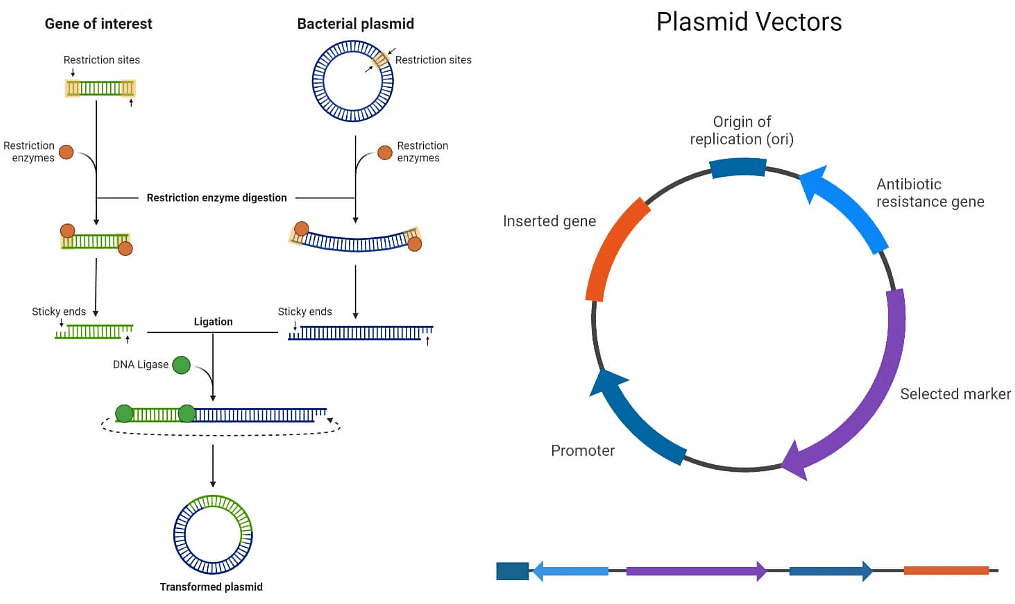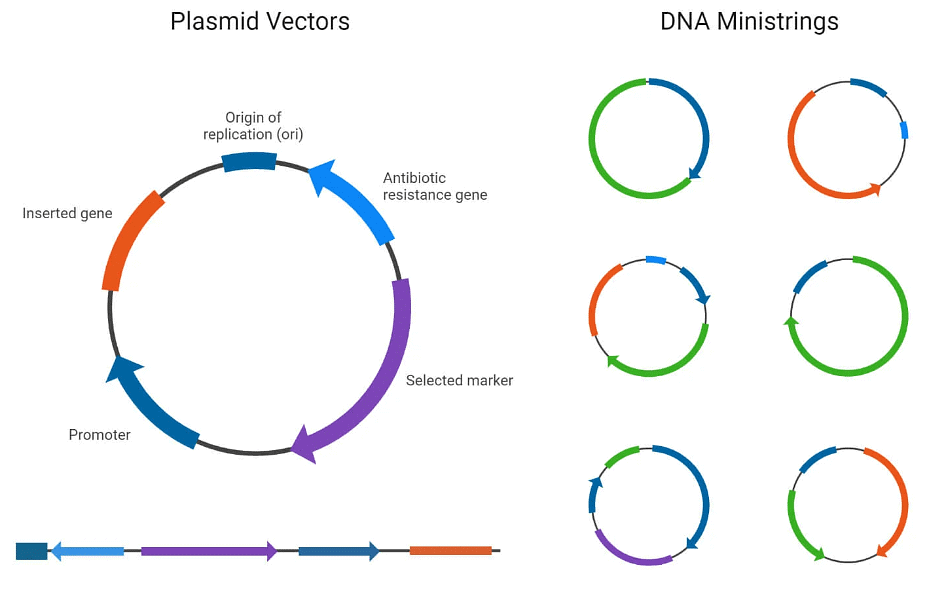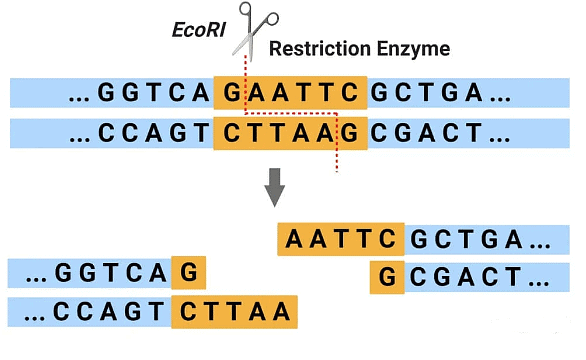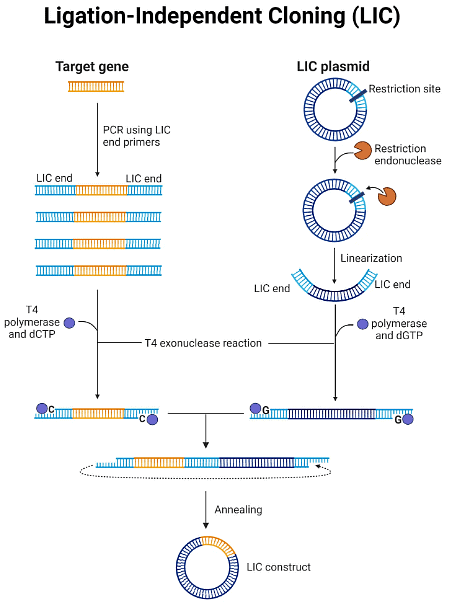DNA Cloning | Zoology Optional Notes for UPSC PDF Download
Principle of DNA Cloning
The principle involves the production of multiple copies of a specific DNA fragment by inserting it into a cloning vector, typically a plasmid. This creates a recombinant DNA molecule introduced into host cells through transformation. Selective media culture allows for the replication of the inserted DNA fragment, resulting in the production of desired DNA copies.

Steps in DNA Cloning
1. Preparation of Gene and Vector:
- Obtain the gene of interest containing the desired DNA sequence.
- For simple organisms, use restriction enzymes on genomic DNA; for complex organisms, alternative methods like reverse transcription or PCR are employed.
- Insert the gene into a vector, commonly a plasmid, through the use of compatible restriction enzymes.
2. Ligation of Gene and Vector:
- Join the vector and gene fragments after digestion with restriction enzymes to form recombinant DNA (rDNA) using DNA ligase.
- DNA ligase recognizes and binds to the ends of the DNA fragments, catalyzing the formation of new phosphodiester bonds.
3. Transformation:
- Introduce rDNA into host cells that express the inserted gene.
- Host cells must be made competent by methods like cold calcium chloride or electroporation, creating temporary pores in the cell membrane.
4. Selection/Screening and Culturing of Transformed Cells:
- Plate transformed cells on nutrient agar medium containing a specific antibiotic based on the antibiotic resistance gene present in the recombinant plasmid.
- Successfully transformed cells, containing antibiotic resistance genes, grow and form colonies on selective media.
5. Isolation of Recombinant DNA:
- Isolate rDNA from cultured transformed cells.
- Select a single colony, culture it in a liquid nutrient medium, allowing host cells to multiply and replicate the recombinant plasmid with the inserted gene.
The isolated rDNA can be further analyzed and used for various applications like protein expression or genetic engineering experiments.
Components of DNA Cloning
1. Cloning Vector:
- DNA molecule used to insert foreign DNA into a host cell for cloning.
- Characteristics include replication ability, small size (<10 kb), a suitable cloning site, and a selectable marker recognized by specific restriction enzymes.
- Types: Plasmids, Bacteriophages, Cosmids, Bacterial Artificial Chromosomes (BACs), Yeast Artificial Chromosomes (YACs).

2. Restriction Enzymes:
- Enzymes produced by bacteria cutting DNA sequences at unique recognition sites.
- Different cutting patterns result in sticky ends or blunt ends, influencing ligation success.

DNA Cloning Methods
1. Traditional Cloning:
- Utilizes restriction enzymes to cut DNA insert and vector at specific sites.
- Caution needed to avoid internal restriction sites in the DNA insert similar to the plasmid, preventing unwanted smaller DNA fragments.
- DNA ligase joins the cut DNA fragments.
2. PCR Cloning:
- Involves direct ligation of DNA fragments obtained through PCR amplification into a vector without using restriction enzymes.
- Popular method: TA cloning.
- Taq polymerase adds adenine (A) residues to 3′ ends of PCR products, creating "A-tailed" DNA fragments.
- Ligates with "T-tailed" vectors using DNA ligase.
3. Ligation-Independent Cloning (LIC):
- Adds specific short sequences to DNA insert ends matching vector sequences.
- 3′ ends of the DNA fragment are trimmed using enzymes with 3′ to 5′ exonuclease activity, creating cohesive ends.
- Resulting plasmid contains repaired single-stranded DNA nicks.

4. Seamless Cloning (SC):
- Relies on matching short sequences at DNA fragment ends with vector sequences, similar to LIC.
- Uses an enzyme with 5′ to 3′ exonuclease activity to create 3′ overhangs.
- Allows insertion of multiple DNA fragments into a vector.

5. Recombinational Cloning:
- Involves site-specific DNA recombinases facilitating exchange and recombination of DNA fragments at specific sites.
- Process: Insert DNA fragment into an entry vector, create an entry clone, recombine with a destination clone.
- Efficient for creating complex DNA constructs through site-specific recombination.
Applications of DNA Cloning
Studying Gene Functions:
- e.g., Cloning the green fluorescent protein (GFP) gene from jellyfish for visualizing protein expression in living cells.
Recombinant Protein Production:
- e.g., Cloning the human insulin gene for large-scale insulin production, reducing dependence on animal-derived insulin.
Genetic Engineering (GMOs):
- e.g., Cloning genes for creating genetically modified crops with improved traits like pest resistance and higher yield.
Gene Therapy:
- Utilizing cloned therapeutic genes to treat genetic diseases.
Forensic Analysis:
- Cloning specific DNA regions for amplification and analysis of genetic markers in determining individual identity in forensic investigations.
Challenges and Limitations of DNA Cloning
Time-Consuming:
- Especially with large DNA fragments; several days needed for steps like culturing and restriction digestion.
Contamination Risk:
- Potential for contamination during the cloning process.
Cost and Labor-Intensive:
- Due to reagents, enzymes, and equipment requirements.
Compatibility Concerns:
- Ensuring successful cloning requires compatibility between the insert and vector.
Ethical Considerations in DNA Cloning
Genetic Modification Concerns:
- Raises questions about potential consequences for organisms and ecosystems.
Environmental Impacts:
- Introducing cloned or genetically modified organisms (GMOs) may have unintended environmental consequences.
Patenting and Commercialization:
- Concerns about negative impacts on scientific research and access to genetic information.
Privacy of Genetic Information:
- Concerns about confidentiality and potential misuse of individuals' genetic data.
Informed Consent:
- Crucial when human subjects are involved in cloning research.
|
198 videos|351 docs
|
FAQs on DNA Cloning - Zoology Optional Notes for UPSC
| 1. What is the principle of DNA cloning? |  |
| 2. What are the steps involved in DNA cloning? |  |
| 3. What are the components required for DNA cloning? |  |
| 4. What are the different methods of DNA cloning? |  |
| 5. What are the applications of DNA cloning? |  |




















